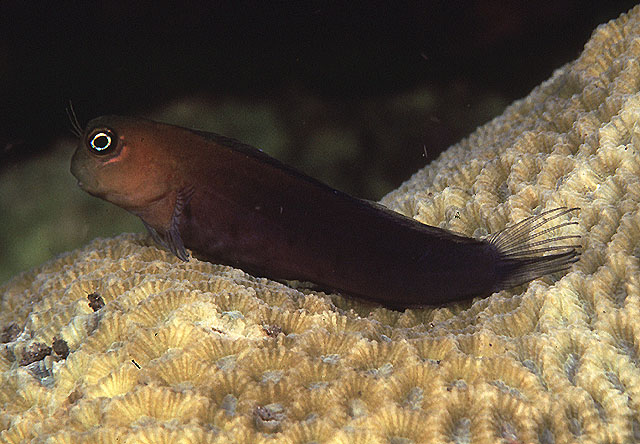| Blenniidae (Combtooth blennies), subfamily: Salariinae |
| 11 cm TL (male/unsexed) |
|
reef-associated; marine; depth range 1 - 25 m |
| Indo-Pacific: Maldives to the Phoenix Islands, north to Ryukyu Islands, south to the southern Great Barrier Reef; throughout Micronesia. |
|
Dorsal spines (total): 11-12; Dorsal soft rays (total): 15-18; Anal spines: 2-2; Anal soft rays: 17-21. Occurs in three color phases: one black anteriorly and yellow posteriorly (bicolor phase), the others black dorsally with a broad white lateral band and dusky belly with or without a yellow tail. |
| Found solitary in abandoned tubes (Ref. 90102). Inhabit clear lagoon and seaward reefs with mixed corals and algae-covered rocks. Oviparous. Eggs are demersal and adhesive (Ref. 205), and are attached to the substrate via a filamentous, adhesive pad or pedestal (Ref. 94114). Larvae are planktonic, often found in shallow, coastal waters (Ref. 94114). |
|
Least Concern (LC); Date assessed: 24 March 2009 Ref. (130435)
|
| harmless |
|
Known from Phoenix Islands. Also Ref. 90102. |
Source and more info: www.fishbase.org. For personal, classroom, and other internal use only. Not for publication.

